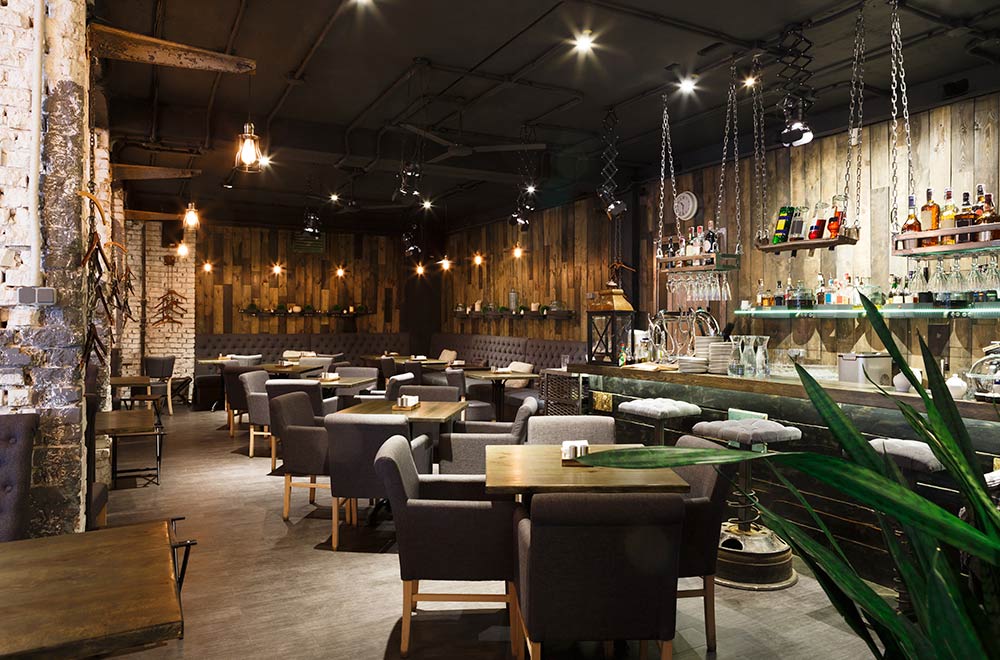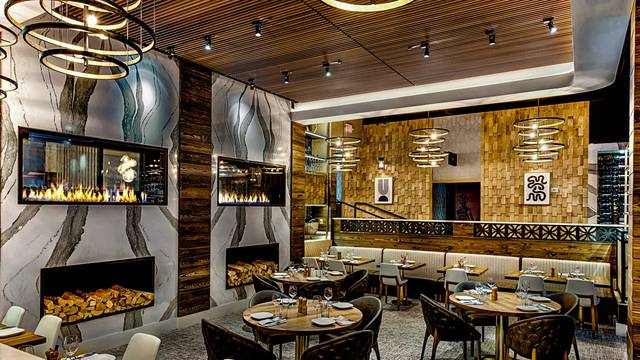Savor Genuine Asian Cuisine With a Pan-Asian Twist for a Culinary Experience
Beginning on a culinary journey with authentic Asian cuisine, boosted with a Pan-Asian spin, offers a distinct chance to explore the abundant tapestry of flavors that specify the area's varied culinary customs. As you consider these attracting recipes, consider the social narratives and historical impacts that form them, each bite providing a tale waiting to be found. asian restaurant isb.

Checking Out Pan-Asian Tastes
In the world of worldwide gastronomy, Pan-Asian cuisine sticks out for its amazing variety and the harmonious interplay of tastes from different Eastern cultures. This cooking method celebrates the rich customs and distinct active ingredients discovered across the continent, creating a tapestry of preferences that is both enjoyable and interesting. Trick to Pan-Asian cuisine is its capability to balance different flavors-- sweet, salted, spicy, and sour-- while highlighting the quality and high quality of each active ingredient.
From the umami-rich soy sauce of Japan to the intense chili peppers of Thailand, Pan-Asian cuisine uses a comprehensive scheme of flavors. These components are commonly combined in innovative ways, boosting dishes with layers of complexity. For example, making use of fragrant herbs such as lemongrass and cilantro, typical in Vietnamese and Thai food, adds a rejuvenating brightness to dishes, while the incorporation of coconut milk supplies a creamy, rich appearance.
The focus on fresh produce and fragrant seasonings makes certain that each meal is not just a feast for the taste however additionally for the senses. Pan-Asian food welcomes restaurants to get started on a cooking trip, discovering the large and differed landscapes of Asian gastronomy with every bite.
Fusion Meals to Attempt
While Pan-Asian food is celebrated for its conventional tastes, the modern cooking landscape is significantly welcoming combination recipes that blend these traditional components with influences from various other areas. This ingenious method not just honors the rich heritage of Oriental culinary arts yet also presents unique taste experiences that interest contemporary palates.
An archetype of such a combination recipe is the Korean-Mexican taco, where marinaded bulgogi beef is covered in a warm tortilla, covered with kimchi and a hot gochujang-infused salsa. This mix marries the bold, mouthwatering flavors of Korea with the lively, fresh elements of Mexican food. Similarly, sushi burritos have gotten popularity, joining together the delicate creativity of Japanese sushi with the passionate, hand-held ease of a burrito, usually including combination active ingredients like tempura shrimp and avocado with a drizzle of wasabi mayo.
One more notable recipe is Thai curry ramen, which instills the luscious, aromatic spices of Thai curry right into the comforting broth of typical Japanese ramen, creating an unified mix that tantalizes the senses. These combination meals prolong beyond plain uniqueness; they stand for a culinary discussion between societies, motivating expedition and innovation in the world of Pan-Asian food.
Essential Components and Spices
To absolutely value Pan-Asian cuisine, one should comprehend the vital components and flavors that develop its foundation. This diverse culinary style draws from an abundant tapestry of Eastern traditions, using an unified blend of appearances and flavors.
Aromatic elements are crucial, with garlic, ginger, and lemongrass being common throughout different Pan-Asian recipes. These components provide a great smelling base that improves the intricacy of tastes. Flavors such as star anise, cardamom, and cinnamon present heat and personality, echoing influences from areas like China and India.

Food Preparation Techniques and Tips
Understanding the art of Pan-Asian cuisine requires experience with its distinct food preparation techniques, each adding to the dynamic tapestry of tastes this cooking tradition is commemorated for. Central to these methods is the stir-fry, a rapid food preparation strategy that maintains the nutritional integrity and brilliant colors go to these guys of ingredients. Using a frying pan, the stir-fry approach permits for even warmth circulation, necessary for achieving the characteristic structure and flavor balance of Pan-Asian meals.
An additional essential technique is steaming, especially common in Chinese food. This mild method maintains the natural tastes and nutrients of active ingredients, making it excellent for seafood and vegetables. Dumplings, a cherished staple, commonly take advantage of steaming, resulting in soft, succulent textures.
Grilling, also indispensable, passes on great smoky depths to dishes such as Oriental bulgogi or Japanese yakitori (Romantic restaurants Islamabad). This strategy often entails marinating ingredients, allowing tastes to permeate deeply before food preparation over an open flame or warm plate
Last but not least, grasping the art of balancing flavors-- pleasant, sour, salted, bitter, and umami-- is vital. Properly layering these aspects can raise a dish from regular to phenomenal, supplying a complicated and satisfying culinary experience that symbolizes the essence of Pan-Asian cuisine.
Eating Experiences Worldwide
Around the world, Pan-Asian food uses an unmatched eating experience, commemorated for its rich tapestry of tastes and lively presentations. This cooking sensation has actually transcended social limits, recording the hearts and tastes of food lovers worldwide. In cosmopolitan cities fresh York, London, and Sydney, Pan-Asian dining establishments work as melting pots where cooking customs from Thailand, Japan, China, and past converge, giving diners with a diverse mix of meals that highlight the area's diversity.
The global appeal of Pan-Asian cuisine hinges on its ability to provide both authenticity and technology. Chefs skillfully marry conventional components such as lemongrass, soy sauce, and miso with modern techniques, leading to dishes that are pop over to this web-site both refreshingly new and acquainted. This blend permits restaurants to start a cooking trip that respects heritage while embracing modernity.
In addition, dining experiences are elevated through thoughtfully developed settings that reflect the ethos of Pan-Asian appearances. From minimal Japanese-inspired interiors to lively Thai-themed rooms, each restaurant uses an one-of-a-kind setting that enhances the cooking offerings. Therefore, patrons are not merely taking in a meal however partaking in a social experience, making Pan-Asian eating an absolutely global phenomenon.
Verdict
The expedition of Pan-Asian cuisine uses a profound understanding of the intricate interaction of flavors and culinary practices throughout Asia. By embracing fusion recipes such as Thai curry ramen and sushi burritos, the culinary journey not only highlights the versatility of standard components however also showcases innovative modern strategies. you can try here This gastronomic journey, enhanced by crucial spices and cooking approaches, gives an unique possibility to appreciate the social variety and culinary artistry that specify Pan-Asian cuisine on an international scale.
Embarking on a culinary trip through genuine Oriental food, boosted with a Pan-Asian twist, offers a special opportunity to discover the abundant tapestry of tastes that define the area's diverse cooking customs.In the world of worldwide gastronomy, Pan-Asian food stands out for its amazing diversity and the harmonious interaction of flavors from numerous Asian cultures. Key to Pan-Asian food is its ability to balance different flavors-- pleasant, salty, spicy, and sour-- while highlighting the freshness and top quality of each ingredient.
